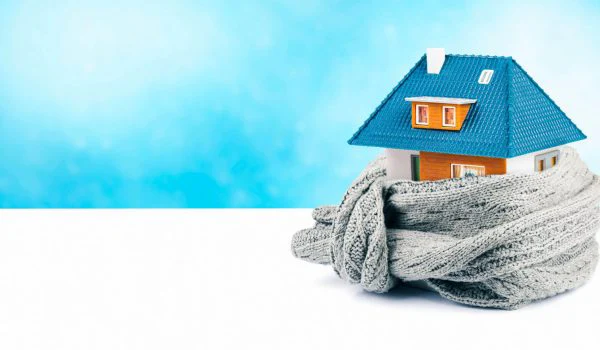Los Angeles has character homes with quirks: 1920s Spanish bungalows in Hancock Park, Mid-Century gems in Sherman Oaks, Craftsman cottages in Eagle Rock, and beach cottages in Venice. Many still have original or inadequate insulation. That means rooms that swing from stuffy to chilly, AC units that never stop, and utility bills that climb each summer. Upgrading attic insulation in Los Angeles homes is one of the fastest ways to stabilize indoor comfort and cut energy waste without altering a home’s style or structure.
What makes older LA attics different
Many pre-1980 homes were built with minimal insulation or none at all. Some used rock wool, wood shavings, or thin batts that have since slumped. Builders did not design for modern ducted air conditioning, so attics now hold HVAC ducts that leak conditioned air into hot spaces. Roofing often lacks radiant barriers, and venting can be inconsistent. Add seismic retrofits, knob-and-tube wiring in a few pockets, and past remodels that spliced multiple attic areas, and each project needs judgment on method and material, not a one-size approach.
The R-value target that actually works in LA
The California Energy Code calls for R-38 in most Los Angeles attics, and R-30 is the minimum for some tight spaces. In the field, R-38 to R-49 performs best for older homes because it damps heat gain during a Valley heatwave and slows night heat loss in coastal microclimates. Loose-fill cellulose at about 10 to 13 inches can hit R-38 to R-49. Blown-in fiberglass needs more depth, often 12 to 16 inches, depending on product. Either route works when air sealing comes first.

Air sealing before insulating is non-negotiable
Insulation slows heat flow. Air sealing stops conditioned air from escaping and hot attic air from entering. In older Los Angeles houses, the biggest leaks hide in plain sight: open chases around plumbing, gaps at can lights, and cracks around the attic hatch. Sealing with fire-rated foam, mastic, and rigid covers yields immediate results. It also keeps insulation clean and dry, so it holds its R-value. Skipping air sealing is why some homeowners add insulation and see little change.
Material choices that fit LA homes
Cellulose offers strong performance in LA’s dry climate. It wraps around framing, fills irregular cavities, and muffles street noise. It also tends to reduce air movement attic insulation Los Angeles through the insulation layer. Blown fiberglass is lighter and resists settling, a plus over recessed lighting with proper covers. Fiberglass batts can work on small projects, but gaps are common around wiring, braces, and junction boxes. Spray foam is reserved for specific assemblies and should be evaluated case by case because of cost, roof ventilation changes, and code considerations. Most older homes get the best value from air sealing plus blown cellulose or fiberglass to R-38 or higher.

Ventilation and moisture in a dry city
Los Angeles feels dry, so moisture is easy to dismiss. Attics still need balanced ventilation to purge heat and occasional moisture from cooking and bathing. Ridge and soffit vents work well together. Gable vents can help in homes without soffits, though they can short-circuit airflow if combined with ridge vents improperly. Bathroom and kitchen fans must terminate outdoors, never into the attic. Older roofs sometimes lack soffit vents; retrofitting low-profile intake vents or adding baffles behind short rafters in a 1920s bungalow can solve the problem without changing exterior trim.
Electrical safety in heritage attics
Any attic insulation project in Los Angeles should include a quick electrical audit. Active knob-and-tube wiring cannot be buried under insulation per code because it needs free air around it to dissipate heat. The fix is to decommission or rewire those runs. Recessed lights need IC-rated fixtures or approved covers to allow insulation contact. Junction boxes must remain accessible. A 20-minute check saves headaches, and it keeps inspectors happy during resale.
Ducts, radiant heat, and roof color
Many older homes had ducts added after construction. They often run across the attic, unsealed and under-insulated. Sealing ducts with mastic and adding R-8 duct wrap can shave 10 to 20 percent off heating and cooling losses. Homes with dark tile or composition roofs absorb strong solar heat. A radiant barrier stapled to the rafters can drop attic temperatures by 5 to 15 degrees on peak days, which reduces AC runtime. It shines in the Valley and inland neighborhoods like Sherman Oaks, Woodland Hills, Glendale, and Pasadena. On the Westside or near the beach, air sealing and insulation usually deliver most of the gains without a radiant barrier.
A practical path for older LA homes
- Evaluate: Check current insulation depth, airflow, duct condition, and wiring. Look for daylight at eaves, signs of pests, and dark streaks that show air leaks. Air seal: Close top-plate gaps, recessed lights, plumbing and flue penetrations, and the attic hatch perimeter. Protect: Build damming around the hatch, mark or cover can lights, and set baffles at eaves to keep ventilation open. Insulate: Blow cellulose or fiberglass to R-38 to R-49. Level the field to avoid thin spots over living areas. Finish: Seal and weatherstrip the hatch, label junction boxes, and confirm bath fans vent outside.
Case notes from Los Angeles neighborhoods
A 1930s Spanish in Los Feliz had 3 inches of patchy fiberglass and leaky can lights. Air sealing and 12 inches of cellulose brought the attic to roughly R-42. The homeowner reported a 6 to 8 degree drop in afternoon bedroom temps and about a 15 percent lower summer electric bill, verified across two billing cycles.
A Mid-Century ranch in Encino had ducts across a 150-degree attic. The ducts leaked at collars and boots. After mastic sealing, R-8 wrap, and an added radiant barrier, the AC cycled off in late afternoons for the first time. Comfort improved in the den, which sat under a low-slope roof that used to bake by 3 p.m.
A Craftsman in Highland Park had a partial remodel with disconnected soffit pathways. Baffles and added low-profile intake vents restored airflow, which stopped the sweaty attic smell that appeared on humid days. With R-38 cellulose, the house held heat better on cool nights while staying calmer on warm afternoons.
How attic insulation affects bills in LA
Utility savings vary by microclimate and house size. In older Los Angeles homes with central air, air sealing plus R-38 to R-49 often trims cooling costs by 10 to 25 percent and heating by 10 to 20 percent. In smaller bungalows with window units, the savings show up as shorter run times and better sleep, because bedrooms stop swinging by 10 degrees overnight. It is common for Payback to land in the two to six year range depending on energy rates, existing conditions, and whether duct sealing is included.
Common mistakes to avoid
Skipping air sealing is the biggest miss. Insulating over active knob-and-tube wiring risks safety and code violations. Covering soffit vents chokes the attic. Leaving bath fans venting into the attic creates damp insulation and a musty smell. Using batts in an irregular attic leaves gaps that act like open windows. Finally, forgetting the attic hatch wastes much of the benefit; an unsealed hatch is a large hole in the thermal boundary.
Signs your attic needs work
Homes with uneven room temperatures, dusty vents, high electric bills in summer, or a burnt-asphalt smell from the attic during heat waves usually need attention. If insulation is below the joists, patchy, or dark with dust, it is underperforming. If ducts look bare or taped with dried, cracked cloth tape, they are leaking. If the attic feels like a blast furnace by noon, a radiant barrier and better airflow may pay off.
What to expect from a professional visit
For attic insulation Los Angeles homeowners value, the first hour matters most. A thorough crew documents insulation depth, leakage points, wiring type, venting, and duct condition. They measure square footage and sketch problem zones. A clear scope lists air sealing tasks, insulation type and target R-value, vent adjustments, and electrical notes. Most projects finish in one day for a standard 1,200 to 2,000 square foot home. Crews protect walkways, vacuum old debris where needed, and leave the hatch sealed and labeled.
Pure Eco Inc. can help
Pure Eco Inc. works every week in Los Angeles, from Mar Vista to Mid-Wilshire, Valley Village r38 insulation Los Angeles Pure Eco Inc. to Silver Lake. The team focuses on practical upgrades that suit older homes: careful air sealing, safe electrical practices, and clean, even insulation installs. They understand how a 1940s roofline or an attic chopped by additions changes airflow and material choice. The result is steady comfort, quieter rooms, and bills that make more sense for the square footage.
For a fast, local quote, call Pure Eco Inc. or request a visit online. Share the neighborhood, roof type, and any hot or cold rooms. A technician can assess your attic and explain which upgrades will move the needle for your home and budget. If attic insulation in Los Angeles is on the to-do list, handle it before the next heat wave so the house stays calm, and the AC gets a break.
Pure Eco Inc. provides professional attic insulation and energy-saving solutions in Los Angeles, CA. For over 20 years, our family-owned company has helped homeowners improve comfort, reduce utility bills, and make their homes more energy efficient. We specialize in insulation upgrades, spray foam installation, and attic cleanup for homes across Los Angeles County. At Pure Eco Inc., we believe in treating our customers like family and creating a greener, healthier living environment for every household we serve. Call today to schedule an attic insulation inspection or get a free estimate.
Pure Eco Inc.
422 S Western Ave #103
Los Angeles,
CA
90020,
USA
Phone: (213) 256-0365
Website: https://www.pureecoinc.com
Social Media: Facebook | X | Instagram | Yelp
Map: View on Google Maps